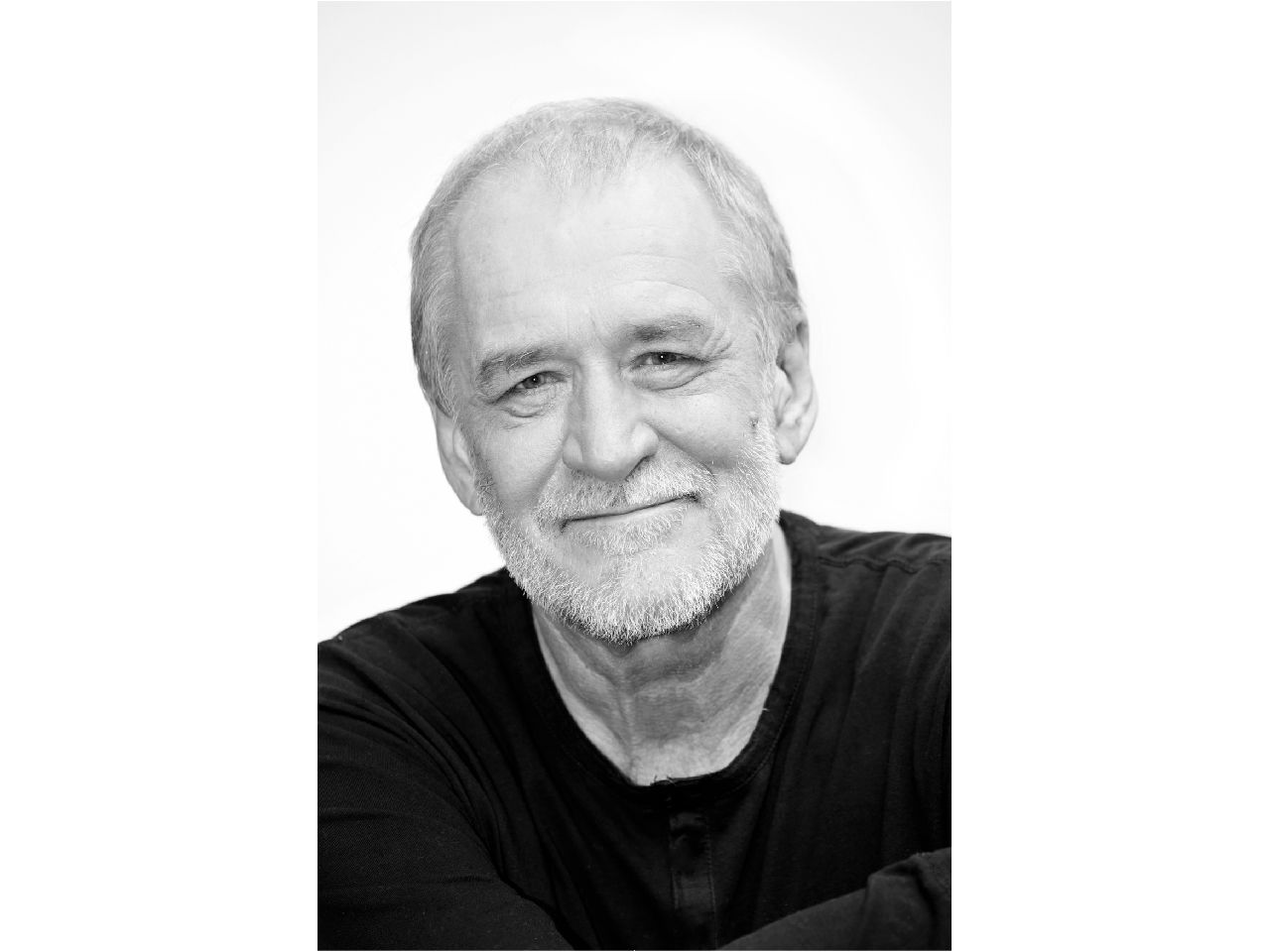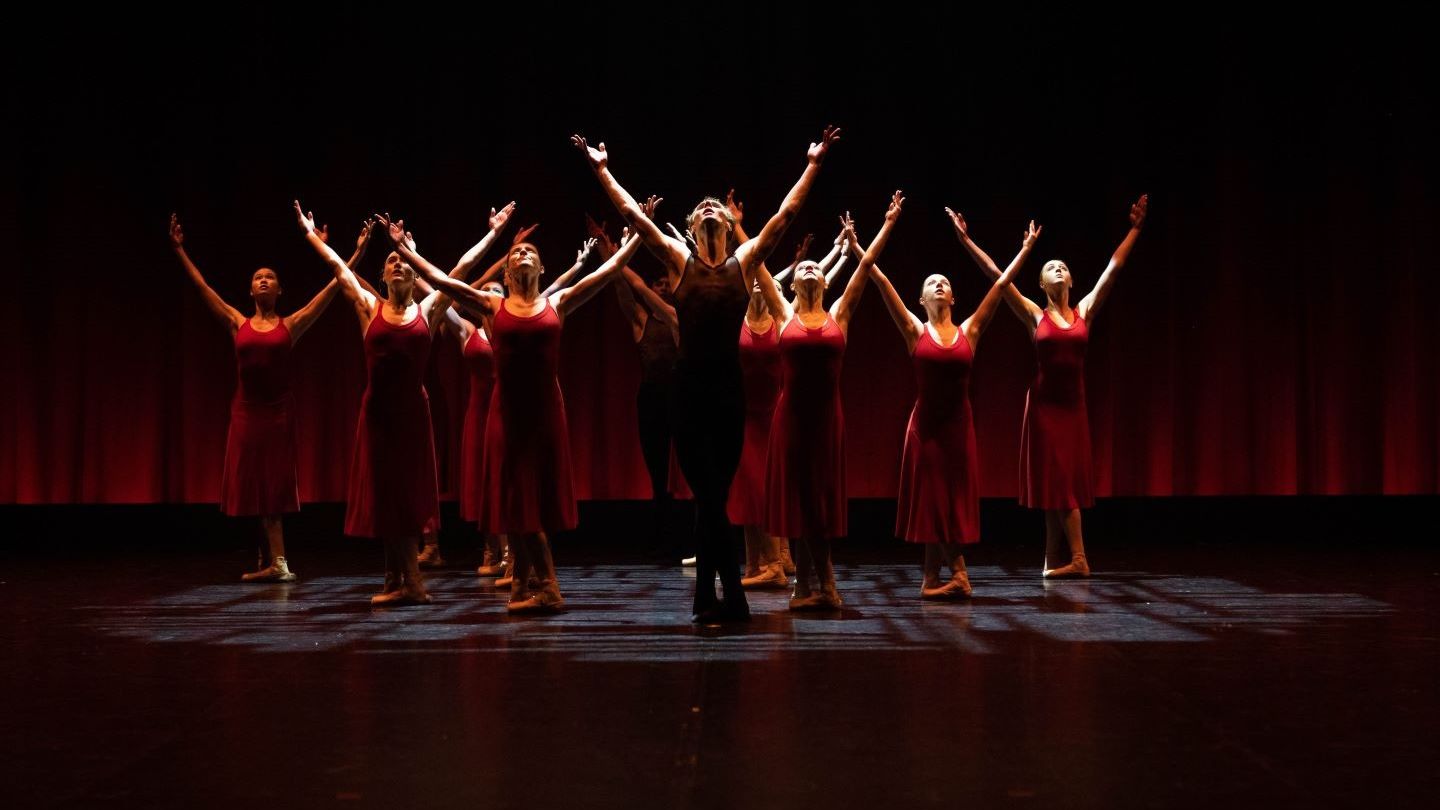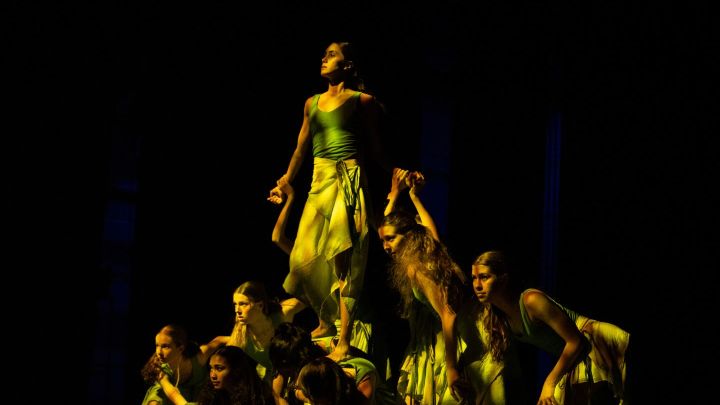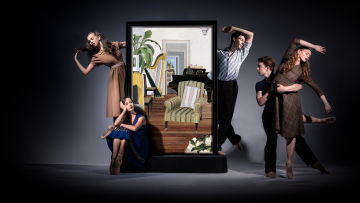Q&A with Lighting Designer Glenn Hughes
Written by Cassandra Houghton

All eyes may be on the dancers onstage, but the next time you go to a show take a moment to appreciate the lighting design, too: how it illuminates a character, influences the atmosphere, and responds to the music. With more than 40 years of experience in lighting theatres across London and Australia - including for the National Theatre of Great Britain, Bangarra Dance Theatre, and the Melbourne, Sydney and Queensland Theatre Companies, Lighting Designer Glenn Hughes is also regular at Queensland Ballet Academy, most recently designing for the 2023 Academy Gala. Here, he gives us an expert’s glimpse into the fascinating world of stage lighting.
How did you get your start in lighting design?
I started in 1973 in a regional theatre north of Adelaide, working as a trainee theatre technician. From there, I was also sent to various theatres on secondment, where I trained in set construction, stage management, scenic painting, film projection, sound and lighting. After four years working around Adelaide, I went to London, spending a few months as a casual in various West End theatres until I was invited to join the National Theatre of Great Britain (now the National Theatre) as a Lighting Technician in their relatively new home on the South Bank. In retrospect, that was my real training in lighting.
How did working in London grow your skillset?
The National Theatre of Great Britain was the most technically advanced theatre at the time, and I was able to work with the people I’d read about in books – the best designers in the world. It was a repertory company so there were up to eight shows at any one time, and they would changeover three or four times a week. Every six weeks or so a new production would be mounted, and one dropped. It was hard work, but I learned a great deal.
On my return I joined the Victorian Arts Centre in Melbourne just before it opened. I managed the lighting department there and later became the Production Manager, overseeing all the technical aspects of inhouse productions across five venues.
First production with Queensland Ballet?
Alice in Wonderland in 2000, choreographed by François Klaus – and Paul Boyd (Queensland Ballet Academy Ballet Master and Academy Resident Choreographer) was dancing in it! I was both Production Manager and Lighting Designer, and it was at the Gardens Point Theatre. I worked with François on many occasions after that as a Lighting Designer.

Tell us about your creative process.
It differs a little depending on the style of work, however several things never change: I’ll spend a lot of time looking at the practical issues of the venue, such as what gear is available, the lighting positions available, access to them and the timeframe, considering as well if there are sets, what the costumes are, and how that informs the production. I’ll have discussions with the choreographer and director about what images they are envisioning and what they’re trying to impart to an audience. Where possible, I try to spend a lot of time in rehearsals, and to develop a stylistic approach specifically for that piece, rather than impose a style on it.
With a story ballet, I also research the story. Where is it set? What period or era? Music is very important to me, so I’ll delve into that too and often it triggers thoughts of colour, modelling and images. Contemporary work often doesn’t have a narrative, but is an emotional expression, so watching it being created is often helpful.
Career highlights?
I’ve designed lighting for many new plays including works by Michael Gurr, Nick Enright, Louis Nowra, Rodney Hall and Alex Buzo. In dance, I’ve created lighting for choreographers such as Francois Klaus, Jack Lister, Stephen Page, Francis Rings, Narelle Benjamin, Daniel Riley, Adam Blanch, Vanessa Mafe-Keane and Melanie Lane. I have enjoyed touring extensively with Melbourne Theatre Company, Bangarra Dance Theatre and Queensland Ballet throughout Australia and internationally and over the years I’ve also taught lighting design at WAAPA, RMIT and QUT.
Favourite thing about your job?
That it is also one of my hobbies. After all these years I still enjoy it, so it doesn’t get better than that really. I enjoy the collaborative process and working with interesting people to achieve a common goal.
What do you enjoy about designing for the Academy Galas?
I always enjoy collaborating with Louise Deleur and Paul Boyd, among others. I’ve been working with Paul for over 20 years, both as a dancer and a choreographer. We did a lovely piece last year using the music of Astor Piazzolla called Tanguedia. Louise’s work is always witty and fun and occasionally very emotional as well. I really enjoyed her Powder from this year’s Gala. Simplicity, or the appearance of it, is the hardest thing to achieve. I love working with the choreographers and students at the Academy – I’ve come to understand that nobody works harder than a dancer.


What inspires you?
New work. Every choreographer or director has a vision for their piece. For example, Louise will often start from a single image. Grant Aris (Academy Associate Teacher and Choreographer) has a clear and prescriptive view and even works out the timings of the cues for me! He likes the lighting to be moving and triggered by the dancers’ movements and entries. For Paul Boyd it’s generally the music – we talk through the piece and develop an idea and might try a few things out in the theatre. There is a place in there for me to support and hopefully enhance all those approaches.
Tell us something challenging about lighting design that the audience may not realise?
How long have you got? There’s a lot! You can’t see it until you’re in the theatre. And even then, you generally can’t see it until the set is built and you have performers on stage in costume; in other words, you’re the last to do your practical work in the theatre. All the planning is in one’s imagination and on paper – what we hope or expect to see. That, of course, doesn’t always happen exactly as you might expect!
Another challenge is that the technology is developing at an incredible pace. In my working life, I’ve seen the progression from analogue, manual lighting control, where every channel and level has to be written down, to limited memory control and tungsten halogen light sources, to digital and computer control and now LED and moving lights. The latest technology has a great many benefits, but I occasionally miss the subtlety and quality of some of the old light sources.
The Talbot Theatre is pretty up to date, and there is a fantastic crew that can make it all work. There is now an ability to do just about anything lighting-wise… you’re limited only by your imagination. Having said that, I’m a great believer that good lighting should never be the focus unless it needs to be.
Images credits:
Image 1 - Queensland Ballet Academy Level 1 Dancers performing Tanguedia by Paul Boyd in the 2022 Queensland Ballet Academy Gala. Photography David Kelly.
Image 2 - Queensland Ballet Academy Contemporary Course Dancers performing Powder by Louise Deleur in the 2023 Queensland Ballet Academy Gala. Photography by David Kelly.
Image 3 - Queensland Ballet Academy Contemporary Course Dancers performing Blue Wave by Louise Deleur in the 2023 Queensland Ballet Academy Gala. Photography by David Kelly.


